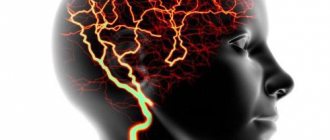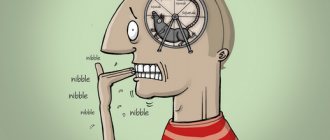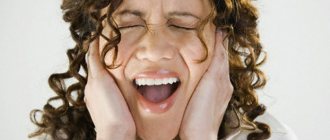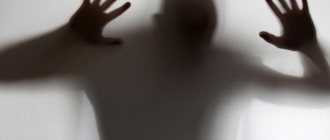Almost every person periodically experiences a decrease in performance, a worsening mood, and a loss of interest in life. Some associate this with overwork or stress, but these symptoms do not always indicate a lack of rest or an age crisis. The same signs characterize a rather dangerous mental disorder.
Recurrent disorder
Repeated long-term (from 2 weeks to 6 months) decline in mental and physical activity, disgusting mood, desire to die are symptoms of a disease that is classified according to the ICD as recurrent depressive disorder (RDD).
Reasons for the development of the disease
Recurrent mood disorder, according to modern scientists, can be caused by several factors:
- Endogenous - the presence of a genetic predisposition.
- Psychogenic - a person usually reacts to mental trauma with depression.
- Organic. Depression can be a consequence of traumatic brain injury, intoxication, neuroinfections, residual organic inferiority, and so on.
The first manifestations of the disease are usually provoked by external influences, most often these are traumatic circumstances. But, repeated phases can be triggered by factors that are not related to external influences.
Causes
Every fifth person on Earth is susceptible to mental disorders. But not every one of them is accompanied by suicidal thoughts, disgust and decreased interest in the world around us. The level of depression is often poorly assessed or mistakenly referred to by other terms: laziness, fatigue or seasonal mood swings.
Severe depression in a person occurs due to a combination of circumstances or a complex of serious psychological problems:
- the passing of a relative, friend, or pet;
- dismissal from work;
- lack of material resources;
- exposure of a citizen to actions of a criminal nature;
- disagreement with the political and social regime;
- lack of nutrition and vitamins in the body;
- failure of vital organs, in particular neuralgia;
- loss of purpose and motivation;
- divorce or wedding;
- separation from a loved one.
The main reason is a complex of conditions. At a fundamental level, this is genetic predisposition, environmental conditions, habitat and a host of other nuances. The brain is able to record a negative program in its head and play it regularly. It’s easy to hold a glass in your hand, because its weight is light, but if you persuade your consciousness that it weighs a lot or hold it for several hours, the glass will become unbearably heavy.
The body often lacks hormones, microelements, and substances that are so necessary for a healthy state, which leads to deviations in the regulation of memory, emotions, and assessment of the condition. Self-perceptions can start the process of depression, but they can also stop it instantly.
An increased sense of responsibility and duty can also drag you into a web of extreme stress. Loneliness, coupled with a lack of social support, drags a person to the very bottom of life. During a period of certain losses, this condition becomes severe depression with a reluctance to turn to specialists for help.
The logical, but most serious manifestations of the disease are pathologies from other medical problems. Oncological diseases, Parkinson's disease, hepatitis, thyrotoxicosis, any deviation of the nervous system from the norm can complicate depression in the early stages of manifestation.
Features of the disease
Features of the disease are manifested in the following:
Attacks occur acutely, usually in the cold season
Women are much more prone to this disease than men
This depressive state can develop into bipolar affective disorder.
There are three main degrees of severity:
In mild cases, the disease practically does not interfere with the patient’s ability to perform usual professional and household functions.
The average degree is expressed in the complexity of communication; a person is able to continue to communicate with people and work, but this already causes certain difficulties in him
The last and most severe degree of the disease is expressed in his inability to perform normal daily activities (get out of bed, eat, drink), the patient is often visited by suicidal thoughts.
Psychosomatics
Psychosomatics is a direction in medicine and psychology that studies the influence of our consciousness and subconscious on the occurrence of various physical diseases of the body.
Simply put, it is the science of how our mental pain can turn into real, physical pain. Scientists studying this area note a direct relationship between various psycho-emotional states and organs.
For example, severe depression most often affects the functioning of the gastrointestinal tract. All this suggests that many diseases of our body, when examined and diagnosed by doctors, can be completely groundless. There are often cases when a patient complains not just of pain, but even of attacks, but doctors are unable to find the source of the disease - after all, all organs are healthy.
In fact, a lot lies in our consciousness and subconscious, which can also affect physical health. Now that you know all the symptoms of severe depression, let's look at the most important thing.
Symptoms of recurrent depressive disorder
The psychotherapist assesses the patient’s condition, the severity of his illness, while simultaneously developing a plan for his treatment. The most terrible condition of any disease is a relapse. Each relapse of a recurrent disorder accompanies the patient with the following symptoms:
It is impossible to concentrate attention on certain things, on making important decisions in the professional and personal sphere.
Negative attitude towards your past, present and future.
Depressed state with a feeling of hopelessness (the patient is constantly visited by negative thoughts and emotions)
Appetite changes (increases or decreases)
Sleep disturbance (insomnia, waking up in the middle of the night with inability to fall back to sleep, constant desire to sleep)
Lack or loss of strength and energy
Low self-esteem, no self-confidence.
Typically, the onset of the disease is much later than bipolar affective disorder. The age of development of the disorder is 30-40 years, the gender prone to the disease is women. The duration of the disease is 5-6 months, after which remissions occur (1.5-2 months).
Need for help
Often a person does not realize how dangerous recurrent depressive disorder is and does not appreciate the complexity of the treatment process. He does not perceive the decline in mood and the constant persistence as symptoms of a serious illness. Another reason why a patient does not come for treatment may be a lack of moral strength, weakness of character, or inability to make decisions.
It is worth taking a closer look at a person with recurrent depression. If you do not pay attention to the symptoms in a timely manner, it can become chronic. Timely assistance from a professional helps to minimize the harm caused by depression. The state of recurrent depression greatly affects social relationships.
A person can lose his family, job, money, and what’s even worse - commit suicide. So you need to go to the doctor as quickly as possible , only a specialist will help you understand the problem and prescribe competent treatment. The sooner the condition is assessed, the better. Be attentive to the health of yourself and your loved ones. At the initial stage of the disease, recurrent depression is treated much faster and easier.
Severity of the disease
This disease has quite a variety of clinical manifestations. There are three degrees of severity of the disease: mild, moderate and severe. With a mild degree, the patient exhibits 2-3 main symptoms of the disease. Moderate severity is accompanied by a large number of symptoms; this degree is much more serious than mild. And finally, the severe degree. In this case, the person exhibits all the main symptoms and the functionality of the internal organs is disrupted. Usually, with this advanced condition, a person needs hospitalization.
Degrees of expression
- Mild degree includes two main and two additional symptoms. In addition, it may be accompanied by somatic disorders that aggravate the course of the disease. There are: - mild degree with minor somatic manifestations; - mild degree with severe somatic diseases.
- Moderate severity is defined as the presence of two main and three to four auxiliary symptoms. And just like in mild cases, somatic disorders are present.
- Severe depressive disorder involves the presence of all major symptoms and at least four minor ones. Usually all of the above are present. A complication of this degree is the presence of psychogenic symptoms such as delusions, hallucinations, and stupor.
Recurrent depressive disorder must be distinguished from schizoaffective disorder and organic mental changes. In the first case, in addition to depression, there are also symptoms of schizophrenia, and in the second, there is an underlying disease that will be detected during laboratory and instrumental diagnostics.
Types of disorder
According to the specific manifestations, recurrent depression is divided into the following types:
- premenstrual;
- seasonal;
- anxious;
- asthenic;
- apathetic.
Premenstrual depression occurs only in women, and episodes occur regularly, about a week before menstruation. The disorder is characterized by a short duration of symptoms (7-10 days), mild or moderate severity.
Seasonal depression is a type of recurrent depressive disorder in which episodes recur in the fall and winter.
The anxiety form of recurrent depression is a disorder that combines symptoms of depressive and anxiety disorders. Pathology often occurs against the background of panic attacks and phobias.
The asthenic form is accompanied by a strong loss of strength, constant physical and emotional fatigue. With apathetic recurrent depression, symptoms such as apathy, loss of the opportunity to enjoy life, and psychomotor retardation come to the fore.
Disease history
Information about depression as a disease has appeared only recently.
In the time of Hippocrates, melancholy was associated with the predominance of “black” bile in the body. Of course, diagnostic methods gradually improved, and by the Middle Ages, theologians came to the conclusion that people subject to despondency were possessed by the devil. Accordingly, they tested on the poor people their entire wide arsenal of means for carrying out the rite of exorcism. They used holy water, prayer, strict fasting and even torture. Fortunately, the Renaissance came, and with it, such fundamental sciences as medicine, physics, and mathematics received a second life. A scientific approach to everything was encouraged. Since that time, neurology and psychiatry began to consider low mood as a recurrent depressive disorder. The history of the disease goes back many centuries. Various approaches to solving the problem have been proposed, but it has not yet been completely cured.
Prevalence
This diagnosis is more common among residents of large cities, because in the “human anthill” you can feel lonely like nowhere else. Overcrowding, poor environment, constant stress, excessive demands on oneself and the desire to succeed certainly put pressure on the human psyche, causing it to experience overload. The fact that people living in cities are more likely to decide to go to the doctor and find out their diagnosis also plays a role.
Somatic, especially neurological diseases increase depression. Constant headaches or heart pain can make a person think about his imminent death. Overly strict upbringing, stress and trauma in early childhood, and episodes of domestic violence also play a big role. Heredity also plays a role.
Symptoms
Signs of recurrent depression appear later than bipolar disorder and appear after 40 years.
Typically, attacks occur in the following patterns:
- with monthly intervals, lasting up to 2 weeks, usually 2-3 days;
- or with a period of “quiet” from 2 months, and clinical manifestations last from 3 months to a year, on average six months.
In the period between attacks, complete recovery may occur, or signs of chronic depression may be observed (the patient constantly feels unhappy), especially in old age.
The older the patient, the longer the periods of trouble. Depressive symptoms in women do not depend on the phases of the lunar-monthly cycle.
Typical core symptoms of recurrent depression:
- depression, despondency, inability to rejoice;
- anhedonia – loss of interest in previously enjoyable things or activities;
- chronic fatigue, fatigue.
Additional symptoms:
- pessimistic attitude, loss of hope;
- negative life ideas, thoughts of death, suicide;
- self-flagellation, cultivating feelings of guilt;
- feeling of hopelessness;
- loss of strength, slowness of action, especially in the morning and evenings;
- sedentary lifestyle, reluctance to perform motor acts;
- inability to concentrate, inattention;
- vital disturbances: loss of libido; deterioration or loss of appetite; insomnia, light or long sleep, more often early morning awakenings;
- stomach and muscle pain.
The identified symptoms are characteristic of any type of depression. Men suffering from depressive disorder are characterized by aggression, fits of rage, and loss of a sense of danger.
Women have typical symptoms of depression; the condition of men is difficult to recognize, because the disease manifests itself in different ways.
Features of age
In adolescence, the risk of suicide attempts and destructive behavior increases compared to depression in later life. In this period of life, there is significant emotional lability, a tendency towards maximalism and great vulnerability. The classic version of melancholic depression with melancholy and loss of vitality is rarely encountered, which is replaced by the two most common types - apathetic and dysphoric.
In old age, symptoms appear more subdued. Instead of classic melancholy, asthenia, anergy, and increased fatigue occur. High tendency to attach an anxiety component. There is fear of the present and the future, while at the same time the past is depicted in less pessimistic tones. Depression in older people is often difficult to identify because its symptoms are ignored and attributed to age-related changes in a person’s mental state.
Depressive disorder - symptoms and treatment
Scientific research has shown that numerous areas of the brain exhibit different activity in patients suffering from depression. This has led proponents of various theories to focus on the biochemical origin of the disease . Over the years, several theories have been proposed regarding the biological cause of depression, including theories revolving around the monoamine neurotransmitters, neuroplasticity, and circadian rhythm.
Genetic factors associated with depression are difficult to identify. In 2003, Science published an influential study by Avshalom Kaspi et al., which stated that gene-environment (GxE) interactions may explain why life stress predicts depressive episodes in some people, depending on allelic variation in the serotonin-binding transporter. promoter region (5-HTTLPR).
Depression may be associated with abnormalities in the circadian rhythm or biological clock . For example, rapid eye movement (REM) sleep—the stage in which dreaming occurs—can be rapid and intense in depressed people. REM sleep is dependent on decreased levels of serotonin in the brainstem and is disrupted by antidepressants, which increase serotonergic tone in brainstem structures. In general, the serotonergic system is least active during sleep and most active during wakefulness.[9] Prolonged wakefulness activates serotonergic neurons, resulting in processes similar to the therapeutic effects of antidepressants such as selective serotonin reuptake inhibitors (SSRIs).
Depressed people may experience a significant lift in mood after a night of sleep deprivation. SSRIs may directly rely on increasing central serotonergic neurotransmission for their therapeutic effect, the same system that influences sleep-wake cycles. Research into the effects of light therapy on seasonal affective disorder suggests that mild deprivation is associated with decreased activity in the serotonergic system and abnormalities in the sleep cycle, especially insomnia. Light exposure also targets the serotonergic system, providing greater support for the important role this system may play in depression.[10] Sleep deprivation and light therapy target the same brain neurotransmitter system and brain region as antidepressants and are now used clinically to treat depression. Light therapy, sleep deprivation, and sleep shifting (sleep phase pretherapy) are used in combination to interrupt major depression in hospitalized patients. Increases and decreases in sleep length appear to be risk factors for depression.
Patients with depressive disorder sometimes show diurnal and seasonal variation in symptom severity, even with non-seasonal depression. Improved circadian mood is associated with the activity of dorsal neural networks. One hypothesis suggests that depression is the result of a phase shift. Monoamines are neurotransmitters that include serotonin, dopamine, norepinephrine and epinephrine. Many antidepressants increase synaptic levels of the monoamine neurotransmitter, serotonin, but they can also increase the levels of two other neurotransmitters, norepinephrine and dopamine. Observation of this effectiveness has led to the hypothesis that a deficiency of certain neurotransmitters is responsible for relevant symptoms of depression: norepinephrine may be associated with alertness and energy, as well as restlessness, attention and interest in life; serotonin may be associated with anxiety, obsessions and compulsions. and dopamine - with attention, motivation, pleasure and also interest in life. Proponents of this hypothesis recommend choosing an antidepressant with a mechanism of action that affects the most severe symptoms. Anxious or irritable patients should be treated with SSRIs or norepinephrine reuptake inhibitors, and if there is loss of energy, norepinephrine and dopamine medications.[11][12]
Many variations of the monoamine hypothesis involve the neurotransmitter serotonin, regulated by the serotonin transporter, which governs feelings and behavior (eg, anxiety, anger, appetite, sexuality, sleep, mood, etc.) People with depression may have differences in the length of the transporter gene. People with long alleles are less likely to develop depression, while people with one short and one long or two short alleles are more likely to develop depression. The study found a moderate effect of the serotonin transporter gene (5-HTT) on perceptions of stressful life events in predicting depression. In particular, depression appears to be particularly common in people exposed to stressful life events with one or two short alleles of the 5-HTT gene.
Serotonin may help regulate other neurotransmitter systems, and reducing its activity may allow these systems to act in unusual and erratic ways. Various disturbances have been observed in dopaminergic systems, but results have been inconsistent. Patients with depressive disorder increased their response to D-amphetamine, and it has been suggested that this is due to hypersensitivity of dopaminergic pathways due to natural hypoactivity. D4 and D3 receptor polymorphisms were implicated in depression, which also suggested a role for dopamine in depressive disorder.
Hyperactivity of catecholamine release during stress and subsequent desensitization has been proposed as a mechanism for depression. Decreased adrenergic activity has also been reported in depression.[13]
Depletion of tryptophan (a precursor to serotonin), tyrosine, and phenylalanine (precursors to dopamine) leads to decreased mood in individuals with a predisposition to depression. Inhibition of dopamine and norepinephrine synthesis by alpha-methyl-paratyrosine did not consistently reduce mood.
Behavioral theories of depression explain the etiology of depression based on the behavioral sciences. It is argued that people with depression act in such a way that they maintain their depressed mood and detect this psychopathological symptom in the surrounding social environment. While many theories do not deny biological factors that contribute to depression, they argue that it is ultimately a combination of a stressor in a person's life and their reaction to an event that triggers a depressive episode. Individuals with depression may exhibit socially inappropriate behavior, fail to participate in enjoyable activities, ruminate over their problems, or engage in various inappropriate behaviors. According to behavioral theory, these are avoidance mechanisms while the individual attempts to cope with a stressful life event, resulting in a decrease in positive reinforcement.[14]
Deficits in social skills and positive social interactions are a major contributing factor in the maintenance of depression. Individuals with depression typically interact with others less frequently than nondepressed individuals, and their actions tend to be more dysfunctional. This lack of interaction leads to social isolation, which contributes to decreased self-esteem and increased feelings of loneliness. An alternative theory of social skills links problems in interaction to the maintenance of depression. The lack of responsiveness exhibited by depressed individuals becomes irritating to their interaction partners, causing them to either avoid interacting with the depressed individual or view them more negatively in the future. A depressed person often sends ambiguous social signals that lead to misinterpretation by their interaction partner, such as a lack of response that can be interpreted as personal disgust. This misinterpretation leads to fewer positive interactions and contributes to the maintenance of depression.[15]
According to contingency theory , depression occurs when positive behavior is no longer rewarded in adequate ways, causing the behavior to occur less frequently and eventually die out. Loss or ineffectiveness of reinforcement can be due to a variety of reasons, resulting in a decrease in the number of events that can be rewarded. This is typically due to biological aspects of depression, including a deficiency of serotonin and dopamine, which leads to a decrease in positive emotions. After the reinforcements disappear, the person begins to interpret his behavior as meaningless, eventually this pattern of behavior turns into learned helplessness (the feeling of having no control over the results, regardless of your actions). This explains the lack of response and arousal in depressed individuals after positive reinforcement.[16]
Consequences
The disease significantly exhausts the body and lowers immunity. The functioning of the cardiovascular and endocrine systems deteriorates. A person who is prone to depression loses his ability to work and cannot be in society. This condition does not lead to anything good. In 2% of patients, relapses of bad mood can even lead to death - suicide.
Symptoms of pathology
Recurrent depressive disorder is characterized by the following main symptoms:
- State of depression.
- Weakening of pleasure or decreased interest in activities that were pleasant to the patient before the onset of the disease.
- Decreased internal energy and increased fatigue.
There are also a number of additional symptoms:
- Low self-esteem and self-confidence.
- Self-condemnation and a feeling of guilt for what is happening.
- , as well as actions of a similar nature.
- Decreased attention and concentration.
- Pessimism about the future.
- Loss of appetite.
- Sleep disorders.
Diagnosis of the disease
A psychotherapist diagnoses recurrent depression if attacks occur periodically. This form of depression differs from others in that the episodes recur after several months and last about two weeks, while the person suffers from apathy and bad mood.
Does the doctor necessarily check whether the patient has a serious mental illness? Quite often, recurrent depression accompanies various pathologies. It can occur in three forms of varying degrees:
- Mild degree has two main and the same number of additional somatic symptoms.
- The average degree is characterized by two main symptoms and four additional ones. When the number of symptoms decreases, the disease becomes more complex.
- Severe degree is characterized by all the main symptoms and four additional ones. Sometimes in advanced cases delirium, hallucinations, and stupor appear.
Diagnostics
The psychiatrist must collect a thorough history of the disease not only from the patient, but also from his relatives in order to have a complete understanding of the number, frequency and nature of attacks.
Often the patient does not remember when the first signs of depression appeared, but his relatives can indicate, if not the exact, then at least an approximate date. Recurrent depressive disorder manifests itself in at least two episodes of decreased mood that last more than two weeks. They should be separated in time by light intervals (when symptoms are completely absent). The doctor does not rule out that the patient may be in a manic state, even if he has had significant experience in treatment for depression. In this case, the diagnosis changes to bipolar affective disorder (BAD). In medical documentation, recurrent depressive disorder is designated by code F.33, indicating the type of current condition, as well as the nature of previous episodes. If there is such information.
Treatment
Treatment of this disease begins with an examination of the general health of the patient. In parallel, a differential diagnosis is carried out aimed at identifying recurrent depressive syndrome and excluding the possibility of another mental disorder.
Treatment of the disease is carried out using:
- Antipsychotic drugs
- Antidepressants
- Inhibitor
- Benzodiazepines.
The use of cognitive, psychodynamic, non-directive, rational, interpersonal and group psychotherapy is effective. Treatment may be complicated by the difficulty of diagnosing the manifesting abnormality.
Recurrent depressive disorder cannot be diagnosed at home using psychological techniques. Only a psychiatrist can make a diagnosis. Psychiatrists also treat the disease.
Treatment of recurrent depression
Postpartum depression - what it is, how long it lasts and how to cope
Recurrent depression responds well to treatment if it is not left to chance so that it becomes protracted. Modern psychiatry has developed an effective complex to combat the disease.
Treatment with drugs
Drug treatment is prescribed only by a qualified specialist in accordance with the differential needs of the patient. Typically, antidepressants are prescribed that are most suitable for a particular person. Neuroleptics, tranquilizers, vitamin combinations and sedatives can be used as auxiliary agents.
Important! There is no specific cure for RDD, so self-treatment without medical supervision is prohibited.
Recurrent depression
Psychotherapy and physiotherapy
Mild and moderate degrees of the disease can be cured by some psychotherapeutic methods:
- cognitive-behavioral correction;
- art therapy;
- group psychotherapy.
To treat severe cases, physical therapy is added to drug and mental therapy:
- electrical stimulation of the vagus nerve;
- exposure to weak pulse currents.
Folk remedies
Folk remedies are not used to treat the acute phase of the disease (as they will not bring the desired result). But after the acute period has stopped, you can use traditional medicine as a preventive measure (valerian, echinacea, peony root, chamomile decoction). It is also recommended to adhere to a diet aimed at saturating the body with substances that improve the production of neurotransmitters for a good mood (eating lentils, nuts, sea fish, hard cheeses).
Important! RDD can be treated both on an outpatient basis and in a hospital setting. The treatment regimen is chosen by the doctor depending on the severity of the case.
After acute symptoms are eliminated and remission occurs, the specialist prescribes maintenance therapy, which reduces the risk of relapse.
Prevention
At the moment, no effective methods have been developed to prevent the disorder. To reduce the likelihood of progression of the disorder, the patient should promptly seek medical help if any of its symptoms develop. Stress disorders should also be minimized to reduce the likelihood of progression of the disorder.
Related posts:
- Hysteria: how does it manifest itself and what should you know? Hysteria is a mental disorder that manifests itself in a variety of functional,…
- Organic asthenic-depressive disorder Asthenic and asthenic-depressive disorder are disorders that are characterized by excessive fatigue, fatigue...
- Phobias and stress in children Phobias in children and adolescents are pathological, excessively expressed reactions of fear,...
- Panic attacks in children Panic attacks in children are sudden, provoked or causeless attacks...
Symptoms of severe depression
But it is not enough just to know the causes of such a disease; you need to learn to distinguish the signs of severe depression in order to seek help from a specialist in time. Similar symptoms include:
- I'll lose my appetite.
- Sleep disturbance, insomnia.
- Lethargy, rapid fatigue, decreased tone and activity.
- The occurrence of memory problems.
- Loss of perseverance, inability to concentrate on anything important for a long time.
- A feeling of constant guilt, a feeling of hopelessness for the future, melancholy.
- Reluctance to live, lack of interest in one's surroundings.
- The emergence of various fears, phobias, panic attacks.
- The emergence of a desire to commit suicide.
- Isolation from other people, including family.
- Decreased self-esteem.
- The appearance of somatic symptoms: pain in the abdomen, intestines, heart, and headaches.
But we need to talk in more detail about the last symptom of severe depression.











